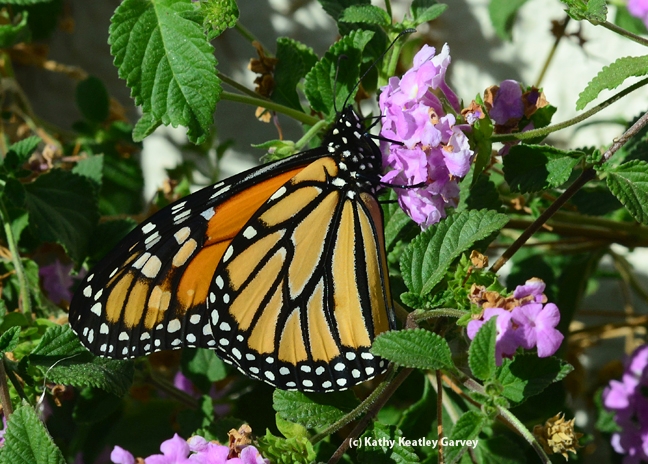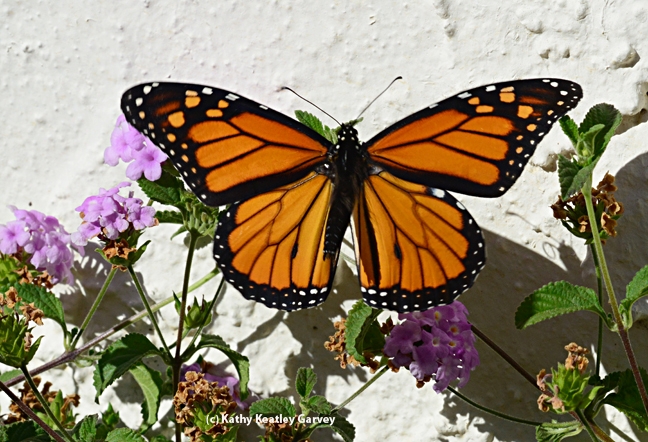As the world mourned the Jan. 27th death of 94-year-old folk singer Pete Seeger and hummed his signature song, "Where Have All the Flowers Gone?", the question has now turned to: "Where Have All the Monarchs Gone?"
The monarch butterfly (Danaus plexippus) is in trouble.
It has been in trouble for a long time.
Lynn Kimsey, director of the Bohart Museum of Entomology and professor of entomology at UC Davis, says the monarch situation is not surprising, really, due to "changing ag practices, urbanization and drought/freezing."
Monarchwatch.org reported today that "the overwintering numbers are in from Mexico and once again it's bad news."
In his blog, Chip Taylor mentions three factors have "contributed significantly to the loss of monarch and pollinator habitats: the adoption of herbicide tolerant (HT) crops, the ethanol mandate, and development."
"In much of the corn-belt," Taylor wrote, "farming is from road to road with little habitat for any form of wildlife remaining. Grasslands--including some of the last remaining native prairies, rangelands, wetlands, and 11.2 million acres of Conservation Reserve Program (CRP) land--have been plowed under to produce more corn and soybeans. Most of these acres formerly contained milkweeds, monarchs, pollinators and other forms of wildlife. They are gone and the total loss of these habitats since 2008 exceeds 24 million acres (an area about equal to the state of Indiana)."
Milkweed is the monarchs' host plant.
"Development consumes about a million acres of farmland a year," Taylor noted, "and the conversion of woodlands and other landscapes to shopping malls, housing and roadways consumes another million acres a year. Overall, the loss of various habitats due to development probably exceeded 34 million acres since 1996."
Taylor estimates that "that at least 167 million acres of monarch habitat has been lost since 1996."
"Not all of the corn and soybean acreage occurs within the summer breeding range for monarchs so the total loss of monarch habitat due to HT crops is lower (150 million) than the total area (174.5 million) planted in 2013. The 24 million acres of grasslands, etc. converted to croplands since 2008 have been included in the estimated loss to HT crops. Add to this number the estimated loss due to development and the total is 167 million acres lost but this could easily be an underestimate since there are losses such as roadside management that we can't account for."
Be sure to read his informative blog, and his charts. Taylor ends with "...let's plant milkweed--lots and lots of it."
The Xerces Society of Invertebrate Conservation's Project Milkweed is raising public awareness and promoting the use of milkweeds in restoration habitats. Xerces' role also includes developing milkweed seed production guidelines and building new markets for milkweed seed, according to its website.
Attached Images:

